Background information about phytochemicals
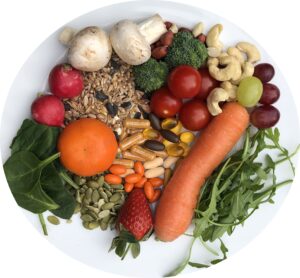 This page explains, non-product related, general information the different categories of phytochemicals, why they are so important for health, common food sources and tips to boost their intake. Natural phytochemicals are responsible for the colour, taste and aroma of healthy plants. Over these appealing attributes, robust evidence has revealed several mechanisms of how they protect us from environmental and ingested toxins.
This page explains, non-product related, general information the different categories of phytochemicals, why they are so important for health, common food sources and tips to boost their intake. Natural phytochemicals are responsible for the colour, taste and aroma of healthy plants. Over these appealing attributes, robust evidence has revealed several mechanisms of how they protect us from environmental and ingested toxins.
Summary of the mechanisms of actions of phytochemicals:
- arm antioxidant enzymes,
- enhance DNA repair pathways
- reduce chronic inflammation
- act as prebiotics which enhance gut healthy bacteria
- promote our healthy inherited genes
- slow the transfer of sugar across the gut wall
- help perfusion of oxygen into the brain and muscles.
Summary of healthy categories which have been connected with phytochemical intake
- Improve exercise performance,
- Help maintain a healthy weight
- Have anti-viral (including covid) properties
- Improve memory and protect us from dementia
- Improve gut health
- Protect us from diabetes
- Prevent and reverse arthritis,
- Protect us from cancer and cancer relapse,
Categories of natural phytochemicals
There are three major groups of phytochemicals: the polyphenols, which can be subcategorized as the flavonoids, phenolic acids, and other non-flavonoid polyphenols. The terpenoids, which can be subcategorized as the carotenoids and non-carotenoid terpenoids and the thiols, which include the glucosinolates, allylic sulfides, and non-sulphur containing indoles . A miscellaneous category includes the betaines, chlorophylls, and capsaicin.
Polyphenols
1. Flavonoids
- Flavonols: quercetin, kaempferol (onions, kale, leeks, broccoli, buckwheat, red grapes, tea, apples)
- Flavones: apigenin, luteolin (celery, herbs, parsley, chamomile, rooibos tea, capsicum pepper)
- Isoflavones: genistein, daidzein, glycitein (soya, beans, chick peas, alfalfa, peanuts)
- Flavanones: naringenin, hesperitin (citrus fruit)
- Anthocyanidins (red grapes, blueberries, cherries, strawberries, blackberries, raspberries, tea)
- Flavan-3-ols (tannins): catechins, epicatechin, epigallocatechin gallate (tea, chocolate, grapes)
- Flavanolols: silymarin, silibinin, aromadedrin (milk thistle, red onions)
- Dihydrochalcones: phloridzin, aspalathin (apples, rooibos tea)
2. Phenolic acids
- Hydrobenzoic acids: gallic acid, ellagic acid, vanillic acid (rhubarb, grapes seeds, pomegranate, vanilla, tea)
- Hydroxycinnamic acids: ferulic, coumaric and caffeic acids (wheat bran, cinnamon, coffee, kiwi, plums, blueberries)
3. Other non-flavonoid polyphenols
- Other tannins (cereals, fruits, berries, beans, nuts, wine, cocoa)
- Curcuminoids: curcumin (turemeric)
- Stilbenes: cinnamic acid, resveratrol (grapes, wine, blueberries, peanuts, raspberries)
- Lignans: secoisolariciresinol, enterolactone, sesamin (grains, flaxseed, sesame seeds)
Terpenoids
1. Carotenoid terpenoids
- Alpha, beta and gamma carotene (sweet potato, carrots, pumpkin, kale)
- Lutein (corn, eggs, kale, spinach, red pepper, pumpkin, oranges, rhubarb, plum, mango, papaya)
- Zeaxanthin (corn, eggs, kale, spinach, red pepper, pumpkin, oranges)
- Lycopene (tomatoes watermelon, pink grapefruit, guava, papaya)
- Astaxanthin (salmon, shrimp, krill, crab)
2. Non-carotenoid terpenoids
- Saponins (chickpeas, soya beans)
- Limonene (the rind of citrus fruits)
- Perillyl Alcohol (cherries, caraway seeds, mint)
- Phytosterols: natural cholesterols, siosterol, stigmasterol, campesterol (peanuts, grains, nuts, shoots, seeds)
- Ursolic acid (apples, cranberries, prunes, peppermint, oregano, thyme)
- Ginkgolide and bilobalide (Ginko Biloba)
Thiols
- Glucosinolates: isothiocyanates (sulforaphane) (broccoli, asparagus, Brussel sprouts, cauliflower, horseradish, mustard)
- Allylic sulfides: allicin and S-allyl cysteine (garlic, leeks, onions)
- Indoles: Indole-3-carbinol (broccoli, Brussel sprouts)
Other phytochemicals
- Betaines found in beetroot
- Capsaicin found in chilli
- Peperinefound in black peppers
- Chlorophylls found in green leafy vegetables
How to improve phytochemical intake
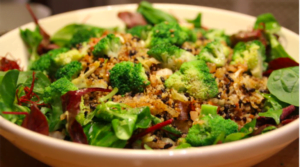 Asian and Mediterranean diets are typically abundant in phytochemical-rich fruits, mushrooms, vegetables, salads, herbs, spices, teas, nuts, berries, seeds and legumes. Typical western diets, on the other hand, are dreadfully deficient in phytochemicals, meaning we need to eat a lot more of them, preferably some with every meal of the day. A lot of emphasis is placed on exotic, rare fruits (superfoods) but they are easily available in the average supermarket in the UK. Less obvious sources include dark chocolate, chilli, red wine, coffee and tea so you don’t have to have a boring diet to enjoy them. Here are some healthy receipts which include tasty phytochemical rich foods.
Asian and Mediterranean diets are typically abundant in phytochemical-rich fruits, mushrooms, vegetables, salads, herbs, spices, teas, nuts, berries, seeds and legumes. Typical western diets, on the other hand, are dreadfully deficient in phytochemicals, meaning we need to eat a lot more of them, preferably some with every meal of the day. A lot of emphasis is placed on exotic, rare fruits (superfoods) but they are easily available in the average supermarket in the UK. Less obvious sources include dark chocolate, chilli, red wine, coffee and tea so you don’t have to have a boring diet to enjoy them. Here are some healthy receipts which include tasty phytochemical rich foods.
In addition to whole meals, there are many other practical ways to boost phytochemical intake on a daily basis:
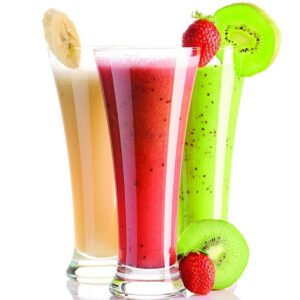 Juices and smoothies – Many of the fruit juices available on the market today aren’t actually ‘real’ fruit juices. They consist of water mixed with concentrate and extra sugar. Even real fruit juice has a high concentration of fructose as so many fruits are used to make them. There is also little chewing resistance to slow down consumption, making it very easy to drink a large amount of sugar in a short period of time. Juicing, which entails the whole fruit being put in the blender, is more effective at maintaining the pulp and fibre, yet still often involves a high fructose content. To overcome this, smoothie aficionados add avocado, vegetables such as kale or spices such as ginger, lowering the sugar content while improving the polyphenol intake.
Juices and smoothies – Many of the fruit juices available on the market today aren’t actually ‘real’ fruit juices. They consist of water mixed with concentrate and extra sugar. Even real fruit juice has a high concentration of fructose as so many fruits are used to make them. There is also little chewing resistance to slow down consumption, making it very easy to drink a large amount of sugar in a short period of time. Juicing, which entails the whole fruit being put in the blender, is more effective at maintaining the pulp and fibre, yet still often involves a high fructose content. To overcome this, smoothie aficionados add avocado, vegetables such as kale or spices such as ginger, lowering the sugar content while improving the polyphenol intake.
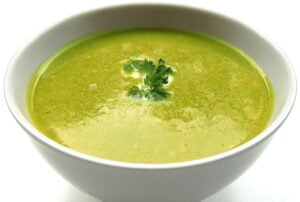 Soups – Most polyphenols survive a degree of cooking, making soups an ideal way to guarantee an effective intake. Tomato soup significantly increases lycopene intake, making it perfect for those not keen on raw tomatoes. A vegetable broth flavoured with extra spices and herbs and consumed before a meal tends to fill the stomach, helping with weight loss regimens, while broccoli, onion and pea soup, with a sprinkle of turmeric and a generous twist of fresh ground pepper, constitutes the perfect superfood mix. To get the most out of soups, eat them with a fresh salad containing raw onions, lettuce or radish, all of which contain the enzyme myrosinase which is required to convert the sulforaphane in cooked cruciferous vegetables into the bioactive antioxidant enzyme glutathione. Also add pepper liberally, as the peperine it contains helps the bioavailability of polyphenols in both the vegetables and other spices.
Soups – Most polyphenols survive a degree of cooking, making soups an ideal way to guarantee an effective intake. Tomato soup significantly increases lycopene intake, making it perfect for those not keen on raw tomatoes. A vegetable broth flavoured with extra spices and herbs and consumed before a meal tends to fill the stomach, helping with weight loss regimens, while broccoli, onion and pea soup, with a sprinkle of turmeric and a generous twist of fresh ground pepper, constitutes the perfect superfood mix. To get the most out of soups, eat them with a fresh salad containing raw onions, lettuce or radish, all of which contain the enzyme myrosinase which is required to convert the sulforaphane in cooked cruciferous vegetables into the bioactive antioxidant enzyme glutathione. Also add pepper liberally, as the peperine it contains helps the bioavailability of polyphenols in both the vegetables and other spices.
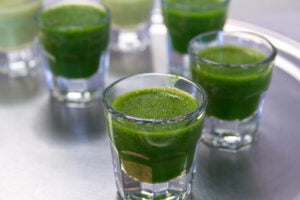 Shots – Some more forward-thinking food outlets are offering healthy shots (around 50ml) of polyphenol-rich ingredients. The fact that they are not heated means they preserve their nutrient and polyphenol content. Common shot blends include ginger with apple, and turmeric and chilli with orange juice. These provide a quick boost but are usually not cheap. It is possible to make your own shot by grating fresh ginger into a small apple juice and adding a twist of lemon. If you have the time, it is also possible to make ginger shots with a high-powered blender, a technique which gets much more out of the root. Roughly chop ginger and add a few tablespoons of water or lemon juice to the blender. Blend until the ginger is broken down and then, if you don’t like the bits, pour the blend through a fine mesh. For a green shot, try combining a 2cm length piece of fresh-scrubbed clean ginger with 1/2 small green apple, 1 cup of packed spinach leaves and half an avocado, before adding the juice from 1 large lemon and a small pinch of cayenne pepper.
Shots – Some more forward-thinking food outlets are offering healthy shots (around 50ml) of polyphenol-rich ingredients. The fact that they are not heated means they preserve their nutrient and polyphenol content. Common shot blends include ginger with apple, and turmeric and chilli with orange juice. These provide a quick boost but are usually not cheap. It is possible to make your own shot by grating fresh ginger into a small apple juice and adding a twist of lemon. If you have the time, it is also possible to make ginger shots with a high-powered blender, a technique which gets much more out of the root. Roughly chop ginger and add a few tablespoons of water or lemon juice to the blender. Blend until the ginger is broken down and then, if you don’t like the bits, pour the blend through a fine mesh. For a green shot, try combining a 2cm length piece of fresh-scrubbed clean ginger with 1/2 small green apple, 1 cup of packed spinach leaves and half an avocado, before adding the juice from 1 large lemon and a small pinch of cayenne pepper.
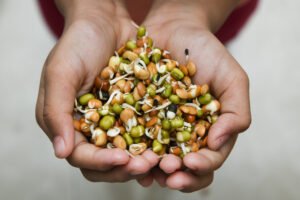 Grains, seeds, nuts and sprouting legumes – Although individual foods can be very healthy, mixing them together is a fantastic way to provide your body with a great variety of essential nutrients. Most health food and international shops now sell mixed grain and seeds, either ground in bags or in the form of health bars, cereals or drinks. They tend to be expensive and still have to be processed in some way. You can, however, make your own superfood grain and seed mix is very easily. It would be a good idea to include pumpkin seeds, sunflower seeds, sesame seeds, whole unsalted peanuts and nuts such as almonds. Phytochemicals are naturally rich in pulses (seeds) such as chickpeas, lentils, peas, watercress but their levels significantly increase if they are added to water and left to sprout. Many people then add these to salads. Various sprouters are commercial available which make the process easier.
Grains, seeds, nuts and sprouting legumes – Although individual foods can be very healthy, mixing them together is a fantastic way to provide your body with a great variety of essential nutrients. Most health food and international shops now sell mixed grain and seeds, either ground in bags or in the form of health bars, cereals or drinks. They tend to be expensive and still have to be processed in some way. You can, however, make your own superfood grain and seed mix is very easily. It would be a good idea to include pumpkin seeds, sunflower seeds, sesame seeds, whole unsalted peanuts and nuts such as almonds. Phytochemicals are naturally rich in pulses (seeds) such as chickpeas, lentils, peas, watercress but their levels significantly increase if they are added to water and left to sprout. Many people then add these to salads. Various sprouters are commercial available which make the process easier.
Role for phytochemical rich supplements
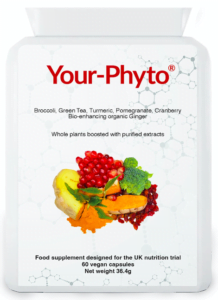 In the busy world we live in, it’s often difficult to prepare foods with enough phytochemicals on a daily basis. A well made supplement is a convenient way to increase intake and spread intake across the day. Nutritional supplements can also contain foods which are not commonly available or not often eaten in Western diets. The problem is, the quality of over the counter supplements can be very variable and most have not been evaluated in robust medical trials.
In the busy world we live in, it’s often difficult to prepare foods with enough phytochemicals on a daily basis. A well made supplement is a convenient way to increase intake and spread intake across the day. Nutritional supplements can also contain foods which are not commonly available or not often eaten in Western diets. The problem is, the quality of over the counter supplements can be very variable and most have not been evaluated in robust medical trials.
The notable exception is YourPhyto which was designed to provide a convenient, safe and evidence based way of increasing healthy plant phytochemical from the start of every day.
It is the only supplement which harnesses the benefits of whole foods as well as targeted extracts from the same species. This ensures both a broad range of phytochemicals from the whole plant as well as a boosted, measurable intake of specific candidate phytochemicals which are most likely to confer the health benefits.
It was developed by the scientific committee of the latest national intervention study following scrutiny of the most robust clinical studies both from the UK and internationally. Because it was made for a nationally approved clinical study it has a level of quality assurance unprecedented in the supplement world: Yourphyto contains only pure plants:
- Broccoli: Whole dried florets
- Turmeric: Whole dried Turmeric
- Turmeric extract: providing extra pure Curcuminoids
- Pomegranate: Whole dried skin, pulp and seeds
- Pomegranate extract: providing more phytochemical especially Ellagic Acid
- Green tea extract: providing polyphenols including EGCG
- Cranberry purified extract: providing polyphenols including quercetin and flavonols
- Ginger: Whole organic bio-enhancing root enhancing absorption and bioavailability
Benefits of ginger and cranberry:
Ginger (Zingiber officinale Roscoe) is rich in several natural bioactive phenolics, including gingerols, paradols, shogaols and gingerones which are known to have anti-inflammatory and antioxidant properties [Thomson, Grzanna, Ojewole]. Laboratory studies have demonstrated anti-proliferative and apoptosis enhancing effects on human prostate cancer cells [Karna]. The main reason for inclusion in good supplements is that Gingerols have anti-sickness properties and improve motility of the gastrointestinal tract, which counterbalances any potential aftertaste or slight nausea, as demonstrated in a minority of men in previous supplement studies [Thomas, Boone, Chaiyakunapruk, Wu]. Ginger helps improve gut mucous membrane integrity, reducing gut and systemic inflammation, improving a sense of wellbeing, reducing leakage of nutrients out of the body, and yet facilitates absorption and bioavailability of micronutrients and minerals. However, unlike peperine, it does not increase absorption or reduce metabolism of other drugs [Thomson, Wu, Grzanna, Ojewole,Dudhatra, Atal, Qazi Kang].
Cranberry extract was investigated in a RCT involving 64 men patients with prostate cancer prior to prostatectomy. In the half who were randomized to a cranberry, compared to those given placebo, there was a statistically significant decrease in PSA, by 22.5%, plus a trend to down-regulation of urinary beta-microseminoprotein (MSMB) and serum gamma-glutamyltranspeptidase, as well as upregulation of IGF-1 [Student]. Some studies of cranberry have shown that, given in sufficient quantity, it can hep with urinary symptoms such as urgency and pain and help prevent urinary tract infections Hisano].
More details of how phytochemicals help us
Reducing chronic, excess Inflammation: Although an inflammatory response is an important part of a healthy innate immunity, persistent low-grade chronic activation of inflammatory pathways is associated with degenerative diseases such as Alzheimer’s disease, atherosclerosis and cancer [Lautenbach, Lautenbach, Khansari]. Markers of chronic inflammation are higher among individuals who are older, overweight, sedentary and those with poor diets [Hotamisligil, Franceschi]. One reason for this stems from an overcompensation of an ailing immune system trying to maintain immunosenescence [Franceschi, Rukavina]. In this situation, poor interleukin (IL)-2 production leads to a decreased cytotoxic capacity of NK and T lymphocytes on a ‘per cell’ basis. To compensate, higher levels of inflammatory biomarkers such as C reactive protein, tumour necrosis factor (TNF), IL-6, cytokine antagonists and acute phase proteins are produced which increase concentrations of NK cells and T cells. These transcription factors, as well as promoting inflammatory pathways, affect more than 150 genes involved in mechanisms of cancer proliferation, apoptosis, invasion, angiogenesis and metastases [Madaan, Hsu, Liu, Hotamisligil, Franceschi, Stark, Ismail]. Fortunately, phytochemicals have been shown to inhibit NF-kappaB signalling in vitro, particularly epigallocatechin-3-gallate (EGCG) and quercetin found in tea and pomegranate; curcumin, caffeic acid, and caffeic acid phenethyl ester (Salminen, Carlsen, Reuland]. Phytochemical-rich food sources also usually contain natural salicylates which reduce inflammation via COX-2 deactivation of prostaglandins [Beg, Burr].
Enhancing anti-oxidant pathways: Some phytochemicals can up regulate anti-oxidant enzymes thereby helping to reduce excess oxidative stress within tissues. This stems from an ability to facilitate activation of the transcription factor NF‐E2–related factor 2 (Nrf2), which enhances an appropriate antioxidant response to damaging reactive oxidative species (ROS) [Stivala, Davidosn, Juge, Dinkova‐Kostova). ROS are generated at higher levels in obesity after eating carcinogenic foods, following strenuous or excessive exercise (Wang, Marseglia, Chen 2001, Stivala 2000). Although patients with established prostate cancer have already sustained DNA damage in order to mutate from benign to malignant cells, avoiding further DNA insults may prevent further mutations of indolent malignant, or pre-malignant, cells into more aggressive phenotypes [Chan, Sonn]. Phytochemicals can also promote the natural adaptive to ROS during exercise, yet do not affect the degradation of antioxidant enzymes after exercise, so the time cells spend with optimal oxidative balance is greatly extended [Poljsak, Ristow, Eder, Teixeira, Avery, Peternelj, Lotito, Uchide]. They therefore enhance the safety and health benefits of exercise, important after a diagnosis of cancer [Thomas]. For this reason the term ‘anti-oxidant’ is misleading when referring to phytochemical-rich foods which, unlike direct anti-oxidant vitamins A and E (highlighted below), do not over deplete ROS levels causing anti-oxidative stress, instead they improve antioxidant efficiency and capacity when needed, and help down regulate it when not needed [Poljsak, Ristow, Eder, Teixeira, Avery, Peternelj, Lotito, Uchide].
Direct effects: Curcuminoids in turmeric, ellagic acid found in pomegranate and tea have been shown in-vitro to inhibit cancer cell proliferation and induce apoptosis in breast, androgen-sensitive and aggressive human prostate cancer cells [Malik, Rettig, Paluszzak, Stefanska, Yang, Albrecht, [Johnson, Shanafelt, Braicuet, Min & Kwon, Yang Dorail, Yang, Somasundaram, Iqbal, Zhang, Chiu, Bachrach& Wan Park]. Pomegranate phytochemicals have also been shown to reduce intracellular markers migration of cancer in both breast and prostate cancer cell lines by increasing cancer cell adhesion [Rocha, Kakarala, Mudduluru]. Citrus bioflavonoids found in fruit including pomegranate and cranberries have been shown to inhibit both breast and prostate cancer cell growth by downregulating androgen receptor signalling and promoting G0/G1 cell cycle block and apoptosis [Lee, Vetrichelvan]. In a study involving implanted prostate cancer, xenographs citrus bioflavonoids also down-regulated inflammatory enzymes, inhibited markers of metastasis (matrix metallopeptidase) and reduced angiogenesis via vascular endothelial growth factor inhibition, leading to tumour shrinkage [Lai]. Other animal studies have shown diet rich in citrus fruits protected them from cancer prostate cancer growth as well as testosterone propriated prostatic hypertrophy [Vafa, Tang]. Broccoli, rich in isothiocyanate, has been shown to inhibit growth and promote apoptosis in cancer cells [Sarkar]. In humans, a study found that regular broccoli intake down regulated cancer genes linked to cancer growth and up regulated genes linked to cancer suppression [Gasper, Gasper, Sonn].
Clinical evidence for cancer prevention
In humans, the health benefits for phytochemical-rich foods has been highlighted in a number large prospective cohort studies [Block, Key, Hu]. This includes three large meta-analyses which concluded that higher intake of leafy green vegetables and carrots correlated with reduced cancer risk [Tung, Li, Banin]. Specific to prostate cancer, prospective cohort studies from across the World have linked diets rich phytochemical-rich colourful fruits such as tomatoes and pomegranate with a lower risk [Joseph, Giovannucci,]. Four case-controlled studies of cruciferous vegetable intake and prostate cancer risk found that higher cruciferous vegetable intake was significantly lower in men diagnosed with prostate cancer, than men in a cancer-free control group [Cohen, Jain, Joseph].
In one observational study, men eating more than three servings of cruciferous vegetable per week had a 41% reduced risk of developing of prostate cancer than men eating one serving per week or less [Liu]. Additionally, a prospective study found that intake of cruciferous vegetables was inversely associated with more aggressive types or those presenting with metastatic prostate cancer [Kirsh]. An Australian study found that serum levels of phytochemicals were higher in volunteers without prostate cancer compared to men who were recently diagnosed [Dhillon]. Other studies have reported that higher intake of foods, with higher levels of flavonoids such as quercetin, abundant in pomegranate, is associated with a reduced incidence of prostate as well as oesophageal and lung cancers among smokers [Knekt, Le Marchand, Rodríguez-Ramiro, Wu, Sun, Vaseghi, Song; Loftfield].
Clinical evidence for a benefit after cancer.
Breast cancer survivors who consumed more than the government-recommended five portions of fruit and vegetables a day had a significantly lower risk of breast cancer recurrence [Pierce, Pierce]. Women with breast cancer who had the highest serum lignan levels, reflecting good intake of legumes, cereals and soy, were reported to have better overall survival than those with the lowest levels [Buck]. The Shanghai Breast Cancer Survival cohort Study, demonstrated that women with the highest intake of the phytoestrogenic polyphenols isoflavone and flavanone, found in soya and other beans, had a significantly decreased risk of breast cancer recurrence and death from any cause compared to those with the lowest intake at a median follow-up of 4 years [Boyapati, Shu]. Similar findings have been observed for high intake of tea after breast and colorectal cancer [Ogunleye, Zhu]. A prospective study reported that people, after treatment for skin cancer who had the highest intake dietary phytochemicals from leafy green and yellow vegetables, had a significantly less new skin cancer formation compared with those with the lowest levels of intake [Heinen]. The British Institute of Food Research conducted a prospective study in which men were randomly assigned to either a broccoli-rich or a pea-rich diet. After six months there were significant differences between GST-deficient genotypes on the broccoli-rich diet, associated with transforming growth factor beta 1 (TGFβ1) and epidermal growth factor (EGF) signaling pathways. Comparison of biopsies obtained pre and post intervention, revealed that more changes in gene expression occurred in individuals on a broccoli-rich diet. Men on the broccoli diet had changes to mRNA processing, and TGFβ1, EGF and insulin signaling [Traka].
Another small intervention in men scheduled for radical prostatectomy reported that daily administration of a tea concentrate supplement for seven weeks, caused a reduction in the serum levels of PSA and several cancer-promoting growth factors [McLarty]. A similar design using dried pomegranate extract, for one month, reported a 16% deduction in prostate 8-hydroxy-2-deoxyguanosine (8-OHdG), an oxidative stress biomarker,compared to placebo but was not statistically significant in view of the small numbers of participants [Freeland]. A phase II clinical trial of a supplement containing a dried pomegranate extract slowed PSA doubling time, but a later RCT from the same group using pomegranate juice concentrate did not demonstrate a benefit [Pantuck, Pantuck]. Another trial of concentrated pomegranate juice involving men with castration-resistant prostate cancer also did not demonstrate a benefit [Stenner-Liewen]. A randomised, phase II dose-exploring study carried out at Johns Hopkins did find that men taking a pomegranate extract for 18 months experienced significant reduction in progression of PSA compared to progression rate pre-treatment [Paller]. As a secondary end point, the patients’ baseline oxidative state was significantly lower at baseline and after pomegranate consumption, measured by serum induced proliferation and apoptosis of LNCaP cells [Paller]. It appears, therefore, that trials of the juice concentrate have not been successful, but some of studies involving the dried concentration have revealed promising results.
To date, the largest RCT analyzing the effects of phytochemical-rich wholefood extracts on cancer risk has been the UK National Cancer Research Network nutritional intervention Study (should this be given the correct name?) [Thomas]. This study combined four different dried foods (pomegranate, green tea, broccoli and turmeric) into a single tablet, taken 2 times a day, and which aimed to provide a wide spectrum of synergistically-acting phytonutrients whilst avoiding over-consumption of any particular phytochemical. The trial involved 203 men with localised prostate cancer, managed with either active surveillance or watchful waiting. The results showed a statistically significant, 63% reduction in median PSA progression rate at 6 months of intervention for the group randomised to the supplement, compared to placebo. A further analysis of the men’s MRI scans demonstrated that presence of disease, tumour size and growth patterns on the scans correlated with PSA changes, providing support for the conclusion that the supplement was exerting beneficial effects, not just on PSA levels, but on the disease itself [Thomas, Thomas]. Furthermore, the supplement was well-tolerated, and there was no effect on testosterone levels. At the end of the study, significantly more men opted to remain on surveillance, rather than proceed to radiotherapy, surgery, or medical castration, saving patients from unpleasant adverse effects [Thomas].

